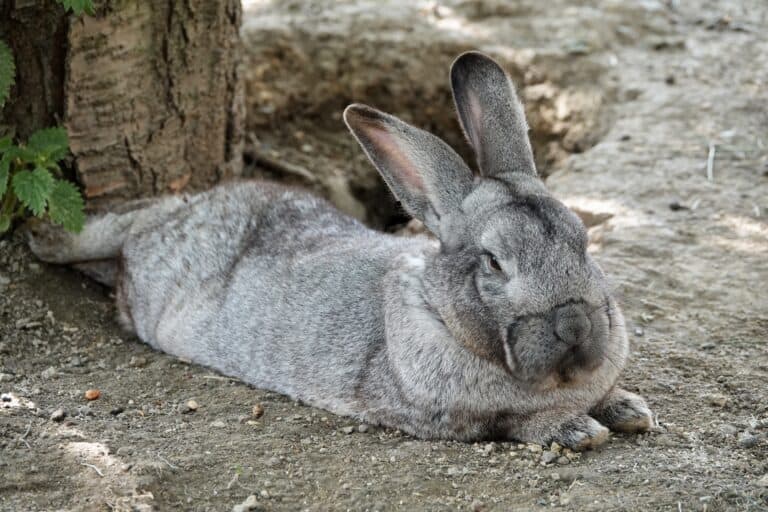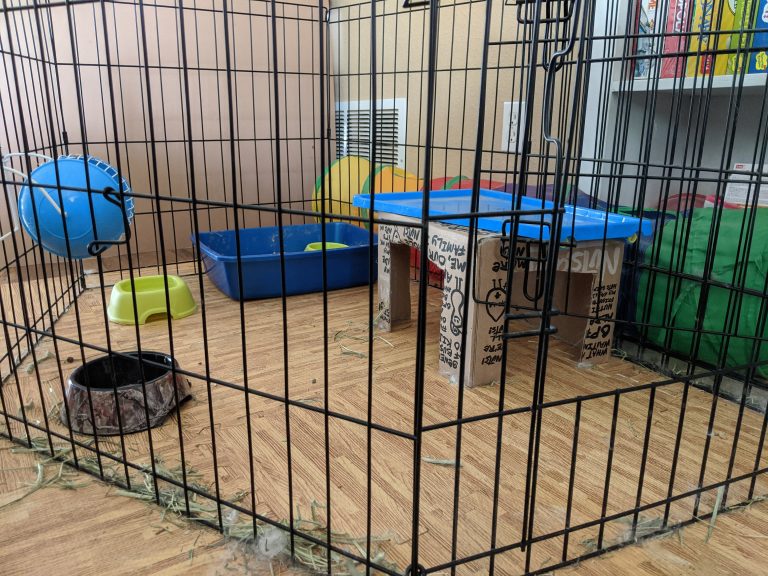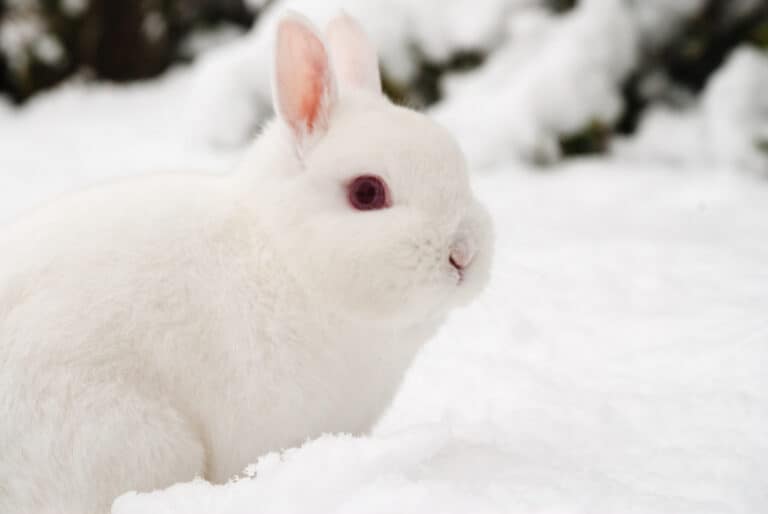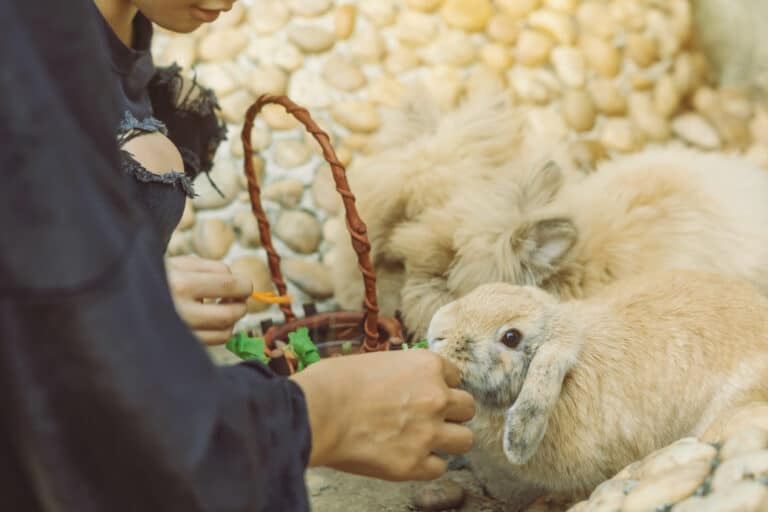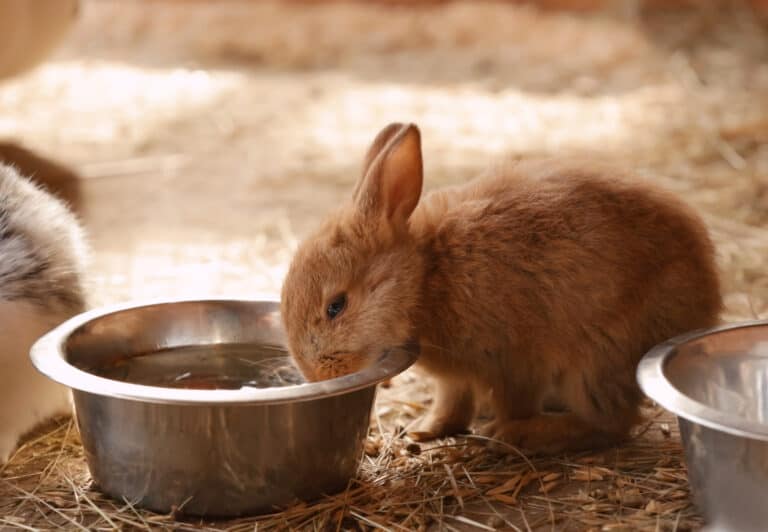Best Litter for Rabbits: What to Use for Your Pet

Rabbits have become one of the best companion animals, and for good reason, they are one of the few small animals that can be trained to use litter boxes. But not just any litter will work for your pet rabbit, find out what is the best litter for rabbits and why.
Best Rabbit Litter at a Glance
To make your pet rabbit feel safe and comfortable and actually use the litter box, the main thing is to use litter that is for rabbits. Besides that, you’ll need:
- The right kind of litter (the right litter is for rabbits, not cats)
- A large enough litter pan
- Plenty of fresh hay for your furry friend to burrow in

Why Litter is a Great Option for Rabbits
Litter training is a great way to give your house rabbit both more freedom for free roaming and less mess for their rabbit owners to clean as rabbits are typically pretty clean creatures.
Plus your pet rabbit will learn to differentiate between his bunny box and sleeping area. This reduces the chances that he’ll lie on his poop or urine or possibly experience health problems as a result.
When filling a litter tray or box with litter, first make sure the size of the box is adequate for the size of your rabbit – larger rabbits will require a large size litter box while smaller rabbits could make do with a medium size litter box.
It’s also a good idea to make sure the box is something that has higher sides to account for any litter your rabbit may kick up.
Best Litter for Rabbits: Qualities of Safe Options
Choosing the best rabbit litter takes some careful thinking as every bun is unique, with different needs and preferences. Be that as it may, the type of litter material that suits rabbits most should have specific characteristics that will cater to their habits and health needs:
- Edible: You won’t be feeding your pet his litter material, but because rabbits love to nibble, you can bet that your bun will chew on his litter and ingest some of it. To prevent intestinal blockages from litter, choose materials that won’t harm your fur baby even if he eats a bundle.
- Dust-free: Some materials contain harmful chemicals that can irritate the lungs and cause respiratory problems in rabbits, so choose those that don’t crumble and turn into dust.
- Absorbent: Rabbits may not sweat, but they sometimes have bathroom-related accidents. Absorbent litter can help sop up the liquid wastes and reduce the mess the accidents create.
- Eco-friendly: You’ll be tossing plenty of litter throughout your bun’s lifetime, so to protect the environment, opt for biodegradable materials. In addition, natural materials are often more comfortable than their synthetic counterparts.
- Great smelling: Look for litter that smells fresh and clean—bonus points for materials that help with odor control. Even though a bunny’s litter box is in a small area, they tend to smell very quickly if not kept clean.
- Comfortable: Keep your pet’s comfort in mind when choosing the best litter. That means the rabbit’s litter box should have no rough edges that can poke or scratch your bun or irritating fragrances that may cause allergies or, worse, respiratory infections in rabbits.
Different Types of Litter
You won’t run out of options for litter material. Some fur parents go DIY and use a natural product, such as paper litter or wood products. The good news is most of those can serve their purpose. However, ensure they’re rabbit-friendly as even some natural materials can contain ingredients that might harm your pet.
Here are some of the best rabbit-safe litters. To help you decide, we’ve included the advantages and disadvantages of each type along with our recommendations.
Aspen Shavings
If you’re looking for wood litter, aspen shavings make the best choice. These shavings are not aromatic wood shavings like pine or cedar, that may contain aromatic oils that can be toxic to rabbits. Aspen shavings come from aspen wood, which grows mainly in the Northern US.
Advantages:
- Non-toxic
- Eco-friendly
- Dustless
Disadvantages
- Limited absorbency
- Can be a bit costly
Our Recommendation
Paper Pellet Litter

This is also called pellet litter. You can’t go wrong with using paper pellets as they are one of the best litter options for your bun. Aside from being widely available, this is a great litter as it absorbs both moisture and odor (aka rabbit urine!) to help keep your bun’s cage clean and fresh-smelling longer.
Advantages
- Extremely absorbent
- Excellent at odor-control
- Dust-free
- Environment friendly
- Budget friendly as a little goes a long way
Disadvantages
- Less comfortable than other materials
- Doesn’t provide much insulation
Our Recommendation
Pine Pellets
Pine pellets are a type of wood pellet and are different from pine shavings. These pellets are 100% natural and a good choice for using with your rabbit litter box as they also smell fresh and clean. Make sure you use untreated, pelleted pine.
Advantages:
- Made from natural materials
- Great absorbency
- Dust-free
- Great with odor control
Disadvantages
- Not known for comfort
- Not a lot of insulation
Our Recommendation
Pelleted Straw
Pelleted straw is different from something like oat hay or Timothy hay. Hay is harvested as food, whereas straw is a waste, a byproduct of wheat. We don’t recommend using regular straw as litter material. While it’s certainly edible, straw doesn’t absorb odor very well, and it can turn moldy when it gets wet. However, the same traits don’t apply to pelleted straws. By using this material, you can be sure that your bun won’t come to any harm even if he eats his bedding.
Advantages
- Edible
- Environment-friendly
- Low dust
Disadvantage
- Can be a bit pricey
Our Recommendation

Grass Mat
Using loose grass on your rabbit’s cage can be pretty messy. Why not opt for grass mats instead? This litter can be made from grass, hay, or any dried rabbit-friendly material. Grass mats are safe to eat (check out this list of leafy greens that are must-haves for your bun) and will give your bun something to nibble on aside from the chew toys you provide.
Advantages:
- Economical
- Available in various sizes
- Can double as chew toys
Disadvantages
- Difficult to clean
- Not so absorbent
Our Recommendation
Hemp Bedding
More and more fur parents are using hemp litter for their buns. Aside from its wonderful scent, hemp bedding is safe to eat. This material works best for buns with allergies as it is non-toxic and dust-free.
Advantages
- Eco-friendly
- Hypoallergenic
- All-natural
- Has high absorbency
- Great smelling
Disadvantages
- A bit messy
- Not as cozy as other bedding materials
Our Recommendation
What You Shouldn’t Use As Rabbit Litter
You’ll find an endless choice of litter materials on the market. Some have been promoted as being a suitable litter for rabbits but, in truth, can cause harm to your pet. Better avoid these bedding types if you want to keep your bun safe, active, healthy, and happy.
- Sawdust: Rabbits often enjoy lying on sawdust because of its softness. However, this material can irritate your pet’s eyes and nose.
- Clumping cat litter: Clay litter, like cat litter, may be soft and comfortable to lie on like sawdust. The trouble is, aside from potentially causing respiratory problems to your pet, the clumping action of cat litter can lead to digestive problems in rabbits.
- Newspapers: Although rabbits enjoy shredding newspapers, the paper’s ink can be toxic to your pet. To be on the safe side, avoid using newspapers as bedding material.
- Cedar or pine shavings: These woods have high concentrations of phenols, which give them their strong aromatic scent. Phenols are compounds that can impact your bun’s liver and nervous system.
- Corn husks: Corn has hard cores, wispy hair strands, and hulls that rabbits can’t digest. If your bun eats his bedding, it can lead to life-threatening health issues such as GI stasis. Moreover, husks can also turn moldy.
Regardless of the rabbit litter you choose, don’t forget to keep your bun’s living space clean. That means changing the litter often and cleaning the cage as needed. This is essential for your pet’s health as soiled bedding can attract flies and other disease-carrying pests.
Now that you know the best rabbit litter options, it’s just a matter of determining which one your fur baby prefers.
More About Rabbit Housing
- Can Rabbits and Chickens Safely Live Together?
- Best Litter for Rabbits: What to Use for Your Pet
- What Do Rabbits Need in Their Cage?
- Do Rabbits Get Cold?
- How to Keep Rabbits Cool in the Summer?
We hope you enjoyed this post! If you did, will you give it a share or two 🙂 Thank you! ~from Every Bunny Welcome


